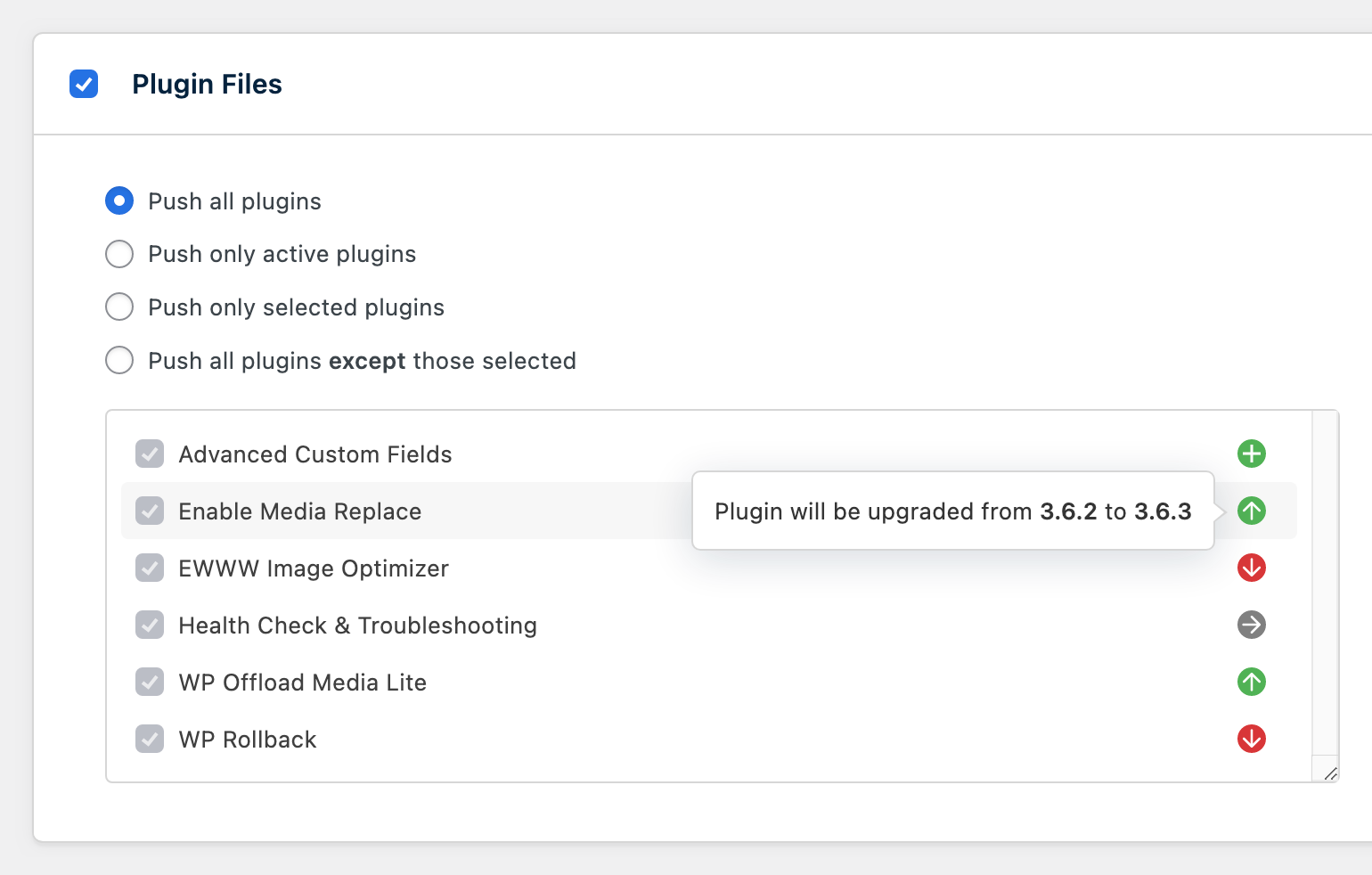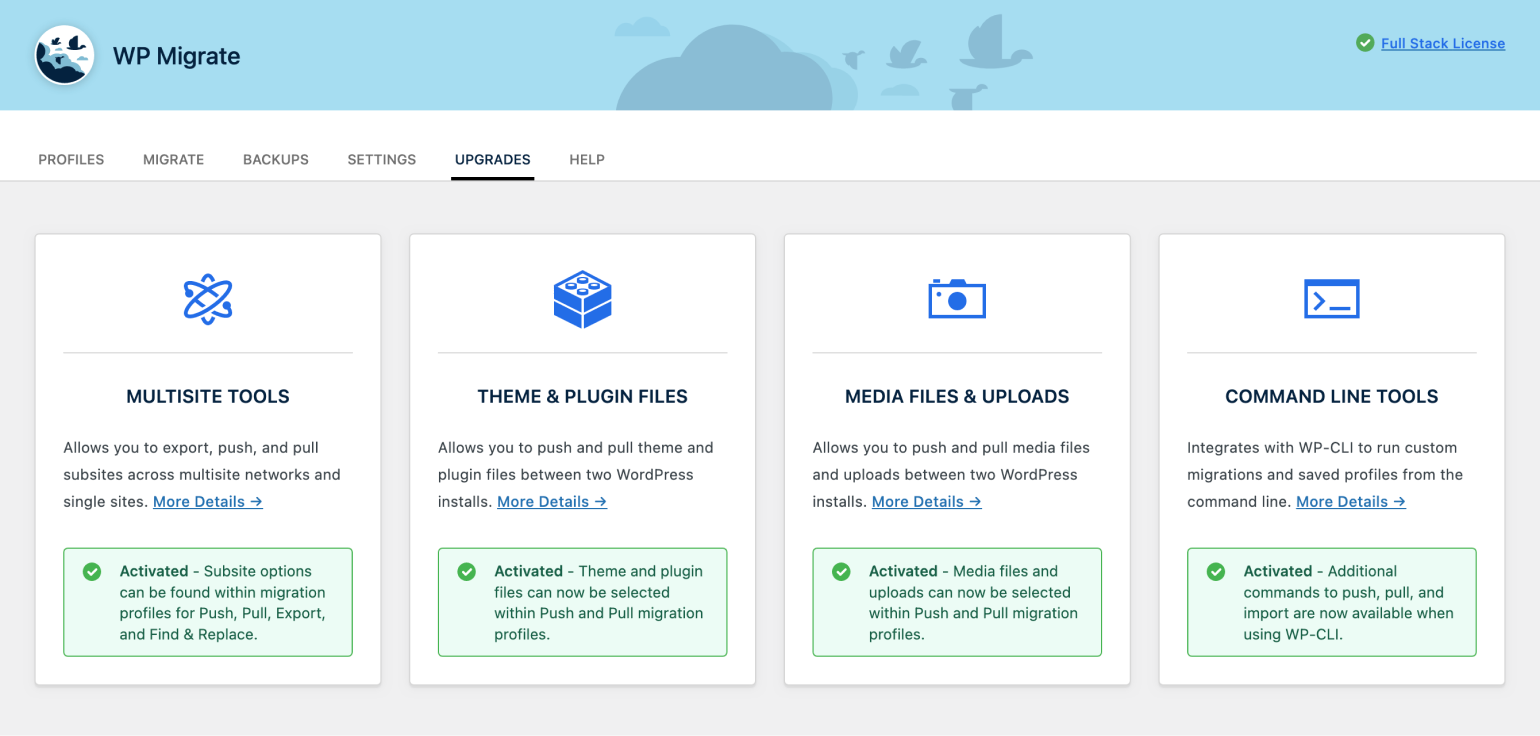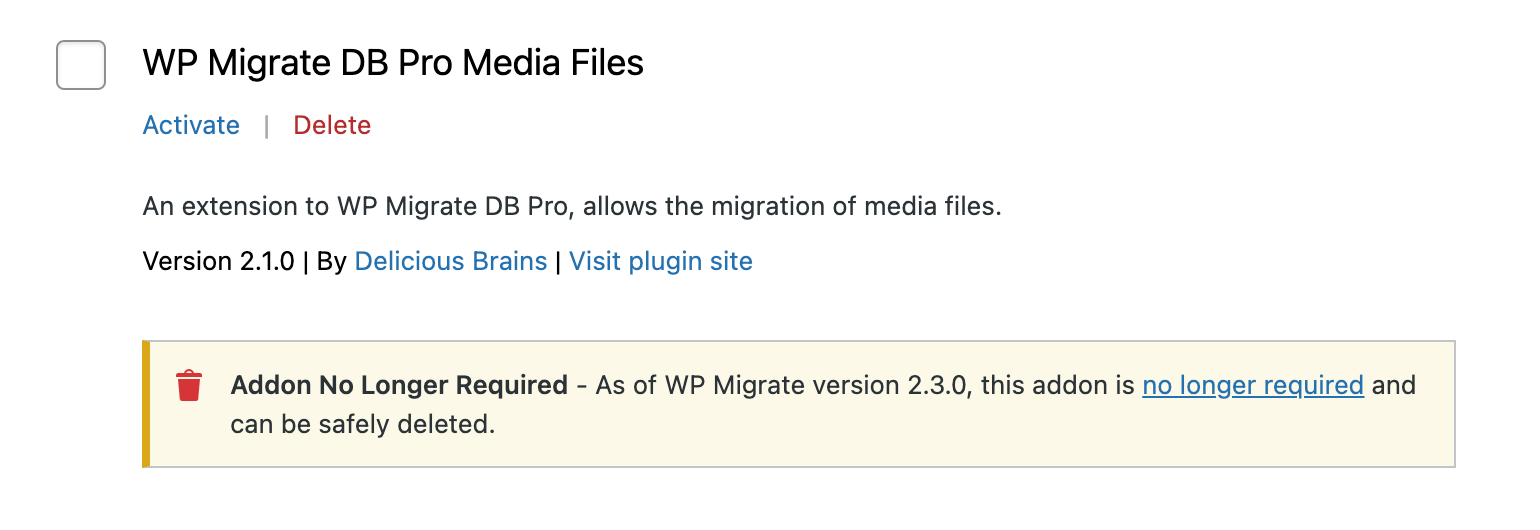Today we’re pleased to announce the official release of WP Migrate 2.3. Yep, you read that correctly, we’ve dropped the “DB Pro.” We’ll discuss more about the name change later in this post, but first let’s dive into what’s new.
This release introduces long-requested features like the ability to push and pull files without the database. Multisite developers can now migrate directly between subsites of two different networks. In addition, comparing theme and plugin versions between two sites just got a whole lot easier. Finally, functionality previously restricted to addons is moving into the core plugin so that setting up a full site migration is faster than ever.
Database-Less Migrations
Migrating themes, plugins, media, and uploads has been possible for some time, but doing so always required including at least one database table. Longtime users may be familiar with the practice of selecting an unused wp_links table to get around this limitation.

In WP Migrate 2.3, the choice to include or exclude the database is now as simple as checking a box in the Database panel of your migration profile. Migrate just the database, just your files, or both. No more workarounds required.
Subsite-to-Subsite Migrations
Moving a subsite from one multisite network to another is one of the most challenging migrations in WordPress today. Doing so efficiently means copying only the content, users, options, and files that are necessary for the subsite to function in its new environment.
Until now, this type of migration was only possible by exporting a subsite as a standalone single site and then importing it into the new multisite network.
In WP Migrate 2.3, a new Multisite panel makes it possible to migrate directly from one subsite to another.

When running a subsite-to-subsite migration:
- The relevant database tables are automatically selected.
- Only the media used by that specific subsite is included in the migration.
- Subsite users are copied from the source to the destination network with one exception. If a user with the same
user_loginanduser_emailalready exists at the destination, that user will persist with its existing ID, and a new user will not be created.
Theme & Plugin Version Comparisons
When migrating themes and plugins, it is helpful to know whether the migration is going to result in a theme or plugin being upgraded, downgraded, or added for the first time. In the past, this required logging into both sites and visually scanning the Themes and Plugins pages to identify version differences.
In WP Migrate 2.3, new indicators show theme and plugin version differences without interrupting your workflow. While these icons and tooltips are purely informational, they will surely influence which themes and plugins you decide to include in your next migration.

Based on the result of the version comparisons, one of four scenarios will play out for each theme and plugin included in the migration.
- 🟢 New theme/plugin will be added at the destination.
- 🟢 Existing theme/plugin will be upgraded at the destination.
- 🔴 Existing theme/plugin will be downgraded at the destination.
- ⚪ Existing theme/plugin will remain unchanged at the destination.
The new version comparisons even work with custom themes and plugins as long as a version number is defined.
Less Hassle, No More Installing Addons
WP Migrate DB Pro and its addons are often among the first plugins installed when spinning up a new WordPress site. But until now, kicking off the first migration required installing and activating up to five plugins (the core plugin + 4 addons) on both the source and destination sites. We know firsthand how tedious this setup process can be, especially when migrating multiple sites in a short period of time.
In WP Migrate 2.3, setup has been greatly simplified by moving addon functionality into the core plugin. Separate plugins such as Media Files and Multisite Tools addons are no longer necessary. A valid license key is now all that’s required to activate these features, which can be found in the new Upgrades tab.

Users will maintain access to the exact same features, but they no longer have the burden of juggling addon plugins across multiple environments.
Upgrading to WP Migrate 2.3 deactivates any active addons while keeping the license key in place. Deactivated addons will then display an inline notice on the Plugins page to indicate they can be safely deleted.

“WP Migrate DB Pro” is Now “WP Migrate”
When Brad first released WP Migrate DB Pro in 2013, the plugin was solely focused on moving WordPress databases between two environments.
Shortly thereafter, the first addon was introduced to migrate media files alongside the database. Then it became possible to run migrations from the command line and move sites in and out of multisite networks. By the time it was possible to migrate theme and plugin files, the humble database plugin had grown powerful enough to complete full site migrations directly from the WordPress dashboard.
Last year Brad asked the Twitterverse whether it made sense to rename the plugin to reflect the reality that it now handles much more than just the database. The overall sentiment was a resounding “Yes!”
Absolutely. I was aware of the plug-in and how popular it is, but I never looked into it for exactly that reason.
— Hendrik Luehrsen (@hluehrsen) July 23, 2021
With the introduction of database-less migrations in version 2.3, the time is right to officially “drop the DB” from our name and move forward as WP Migrate. This new name better suits the plugin that is now capable of migrating any combination of WordPress database tables, media files, uploads, themes, and plugins.
Oh, and to go along with the new name, CLI users like Greg can finally rejoice as wp migrate can now be used as an alias of wp migratedb when running migrations from the command line. 🙌
Drop it. Please drop it.
Because this happens to me literally everyday: $ wp migrate profile 1 Error: ‘migrate’ is not a registered wp command. See ‘wp help’ for available commands. Did you mean ‘migratedb’? 🤣 — Greg Rickaby (@GregRickaby) July 23, 2021
And More
For a full list of new features, improvements, and bug fixes, see the 2.3 Changelog.
Next Up
In WP Migrate 2.4, we’ll continue to strengthen support for full site migrations, including:
- The ability to migrate other files and folders such as must-use plugins, languages, and third-party directories found within
wp-content. - Improved speed and reliability, especially when migrating media files.
- Better error handling that reduces the amount of “rework” that needs to happen in the event that a migration is interrupted.
Are you excited to see features like database-less and subsite-to-subsite migrations make their way into the plugin? What do you think about the new name? Let us know on Twitter or in the comments below.